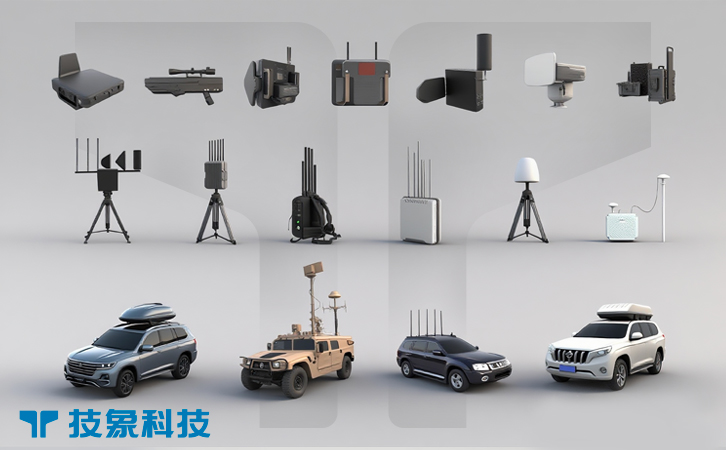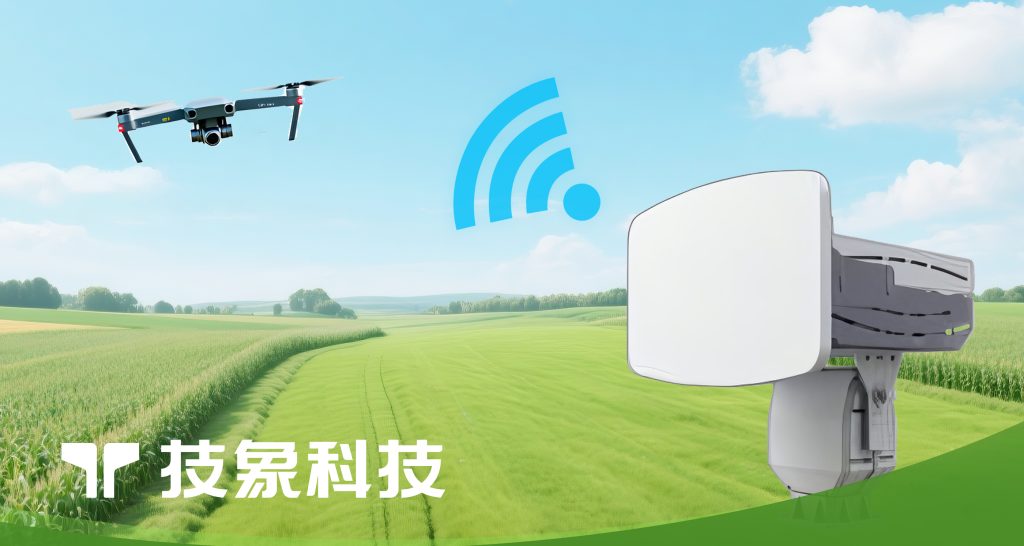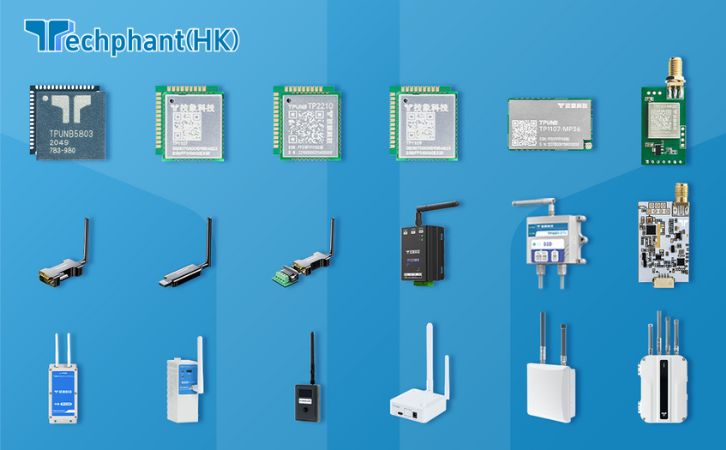Yes, specialized radar systems designed specifically to detect drones do exist and are a mature and critical component of modern counter-drone and airspace security solutions. Their effectiveness, however, is highly dependent on the specific radar technology, its configuration, and the characteristics of the drone. Here’s a detailed breakdown:
1. Core Capability: Detection and Tracking

Radar fundamentally works by emitting radio waves and detecting their reflections off objects. This allows it to determine the range, direction (azimuth and elevation), and often the velocity of a detected object .
Modern drone detection radars are specifically engineered to detect the low Radar Cross Section (RCS), low altitude, and slow speeds typical of consumer and commercial drones – characteristics that make them invisible or hard to track for traditional air traffic control radars designed for large, fast aircraft .
2. Types of Radar Used for Drone Detection:
Pulse Doppler Radar: Common in counter-drone systems. It analyzes the Doppler shift in reflected pulses to determine velocity and filter out clutter (like stationary objects). Deep neural networks are often used for real-time classification .
Frequency Modulated Continuous Wave (FMCW) Radar: Uses frequency modulation to measure both distance and speed simultaneously with high resolution (e.g., 0.15 meters), suitable for precise monitoring like airport runways .
Multiple Input Multiple Output (MIMO) Radar: Uses multiple transmitters and receivers to create virtual apertures, improving angular resolution and target discrimination. Effective at shorter ranges (e.g., within 150 meters) .
Active Electronically Scanned Array (AESA) Radar: Phased array radars with electronically steerable beams (no moving parts). Offer high flexibility, fast scanning, multiple simultaneous beams, strong clutter rejection, and resilience in complex electromagnetic environments. This is a dominant technology in advanced drone detection systems (e.g., MADDOS, Blighter A400) .
Synthetic Aperture Radar (SAR): Generates high-resolution images, useful for long-term monitoring and distinguishing drone types in open areas like borders .
Micro-Doppler Radar: A key capability in specialized drone radars (e.g., IRIS®). Detects minute frequency shifts caused by moving parts like drone rotors, enabling highly reliable distinction between drones and birds or other small objects .
3. Key Performance Parameters:
Detection Range: Varies significantly based on radar type, frequency band, power, and drone RCS. Examples:
3-8 km for Ku-band systems against RCS=0.01 m² targets .
≥5 km for specific phased array systems .
Up to 12 km for advanced systems using Dynamic Signal-to-Clutter Ratio (DSCR) detectors and ATR .
Accuracy:
- Range/Distance: ≤2m , ≤10m .
- Azimuth: ≤0.2° , ≤1° .
- Elevation: ≤0.2° , ≤1.5° .
- Minimum Detectable Speed: As low as 0.1 m/s or 0.5 m/s , crucial for hovering drones.
- Coverage: Typically 360° azimuth. Elevation coverage varies (e.g., 60° , 90° ).
- False Alarm Rate (FAR): Advanced systems using micro-Doppler and AI/ML classification achieve very low FAR, often <1%, by distinguishing drones from birds, kites, etc. .
- Target Capacity: Modern AESA systems can track hundreds or even thousands of targets simultaneously .
4. Advantages of Radar for Drone Detection:
All-Weather Operation: Unaffected by darkness, rain, fog, dust, or smoke .
Long Range: Capable of detecting threats significantly earlier than optical or acoustic sensors .
Robustness: Performs well in noisy environments and is largely immune to visual challenges .
3D Tracking: Provides accurate position (range, azimuth, elevation) and velocity data .
Detection Independence: Can detect drones regardless of their communication method (RF, GPS, WiFi, Cellular) or autonomy level, as it relies on physical presence .
5. Limitations and Challenges:
Very Small Drones: Extremely small toy drones (RCS similar to large insects) may fall below the detection threshold of even specialized systems .
Ground Clutter: Detecting very low-flying drones against complex background clutter (urban areas, trees) remains challenging, though modern processing (MTI, STAP) mitigates this .
Cost: High-performance drone detection radars, especially AESA systems, can be expensive, though costs are decreasing with technological advancements and commercial off-the-shelf (COTS) hardware .
False Positives (Mitigated): Early systems struggled with birds; modern micro-Doppler and AI classification have drastically reduced this issue .
Size/Power: Some high-power, long-range systems may have significant size and power requirements, though man-portable options exist .
6. Integration is Key:
For a comprehensive and reliable counter-drone system, radar is rarely used alone. It is typically integrated with other sensors:
RF Sensors: To detect communication signals, identify controller location, and provide classification .
Electro-Optical/Infrared (EO/IR) Cameras: For visual confirmation, classification, and intent assessment, cued by radar data .
Acoustic Sensors: Can provide short-range detection and classification cues.
This multi-layered sensor fusion significantly enhances overall detection probability, classification accuracy, reduces false alarms, and provides a more complete situational picture .
7. Examples of Commercial Drone Detection Radar Systems:
Robin Radar Systems – IRIS®: 3D radar using micro-Doppler for classification (360°x60°), emphasizes bird/drone discrimination and affordability .
Terma (SCANTER 5000/6000 series with AI drone detection): Land-based and naval radars augmented with AI/ML for high-accuracy drone detection .
MADDOS Radar: S-Band AESA radar (360°x90° with 4 panels), <1% false alarm rate, classifies targets as UAVs .
Blighter® A400 Series: Software-defined eScan (phased array) radar optimized for drone detection across various bands (S to Ku) .
WHU Radar (Academic/Commercial): X-Band AESA pulse-Doppler with ATR capability, extended range (12km), high target capacity .
Star Sea Technology R-Series (e.g., R03K, R05K, R08K): Ku-band radars offering varying detection ranges (3km, 5km, 8km) with high accuracy .
8. Future Trends:
Increased Use of AI/ML: For enhanced target classification, behavior prediction, false alarm reduction, and beyond-theoretical-horizon detection .
Miniaturization and Cost Reduction: Making capable systems more accessible for a wider range of applications .
Higher Frequencies (e.g., mmWave): Offering finer resolution for better target imaging and classification .
Advanced Sensor Fusion: Deeper integration and more intelligent correlation of data from radar, RF, EO/IR, and acoustic sensors .
In conclusion, specialized drone detection radars are not only real but are a vital and rapidly advancing technology. They offer reliable, long-range, all-weather detection and tracking capabilities, especially when integrated into multi-sensor counter-drone systems. While limitations exist regarding the smallest drones and complex clutter, continuous advancements in radar technology, signal processing, and AI are steadily improving performance and accessibility.



